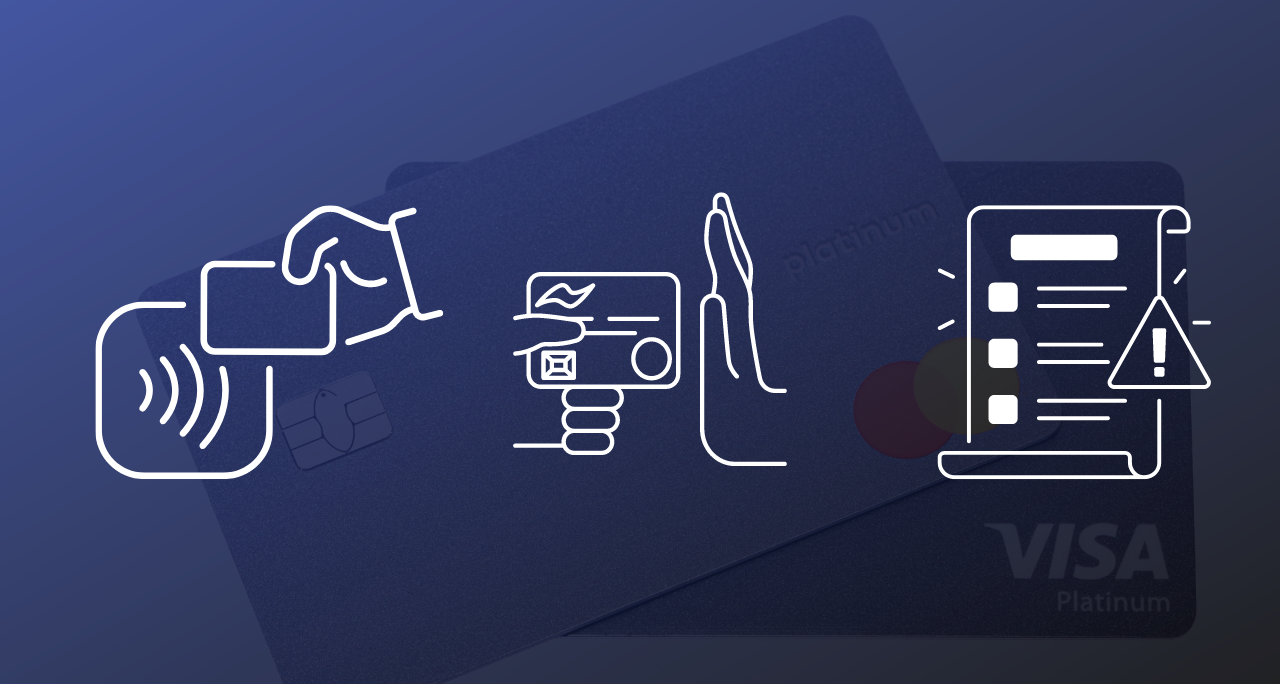Visa has recently announced changes to its chargeback rules. Specifically, it has introduced a Compelling Evidence requirement for disputes falling under the Visa CE/30 chargeback reason code.
This means that it will require merchants to provide evidence supporting their claim that a transaction was authorized by the cardholder. Merchants must also show that the goods or services were delivered as agreed. The change came into effect on April 15th, 2023. It applies to all merchants globally.
The context for this change is that, according to Visa, disputes related to fraudulent transactions have increased by 15% year over year. The new Compelling Evidence requirement is intended to provide a more robust framework for resolving these disputes both efficiently and fairly.

A brief overview of Visa dispute categories
Visa disputes fall into four broad categories: fraud-related disputes, authorization disputes, processing errors, and consumer disputes.
Fraud-related disputes are the most common type of dispute. They can occur when a transaction is not properly authorized by the genuine cardholder.
Authorization disputes occur when the merchant fails to obtain proper authorization for a transaction.
Processing errors can happen when a transaction is processed incorrectly (e.g., it’s a duplicate of a previous transaction).
Consumer disputes occur when the cardholder either does not receive the goods or services for which they paid or is dissatisfied with them.
The drivers behind the new rule update
Friendly fraud, alternatively called chargeback fraud or payer fraud, refers to situations where a cardholder abuses the chargeback process to avoid paying for a product or service. It is different from instances where customers unintentionally initiate a chargeback on a valid transaction because they do not recognize or recall the purchase.
This type of payer fraud is a growing concern for merchants. In addition to the loss of revenue, it also exposes them to chargeback fees. Furthermore, high levels of chargebacks can lead to a merchant being perceived as high risk. This means that some service providers may refuse to work with them at all. Those that do will typically charge higher fees.
Visa has introduced several solutions aimed at reducing the risk of friendly fraud and providing merchants with a fair opportunity to contest chargebacks. One of these solutions is the compelling evidence rule. This requires merchants to provide clear evidence both that the genuine cardholder authorized the transaction and that the goods/services were provided as agreed.
VISA Compelling Evidence 3.0 Explained
Visa has provided detailed guidance on the practicalities of the Compelling Evidence 3.0 rule. There are, however, three key points that all merchants must understand.
Authentication vs Authorization

Authentication relates to verifying the identity of the payer. Authorization relates to a merchant requesting permission from a payer’s bank to proceed with a transaction.
When authentication takes place, it generally happens before a transaction is sent for authorization. (If the authentication fails, there is no point in requesting authorization). Some transactions are, however, authorized without the payer being authenticated by their bank (via Visa).
For example, all chip and PIN transactions are authenticated, but not all are authorized online. By contrast, many contactless transactions are authorized online, but very few are authenticated.
Merchants who do not authenticate payers via the methods offered by the scheme may still establish them by other means, e.g., ID checks. Merchants would, however, need to ensure that their approach was both robust (compelling) and legal (e.g., under GDPR). In other words, the authentication would need to be strong enough to satisfy Visa but not excessive.
Goods/Services Provided as Agreed
It is not necessarily enough just to show that the goods or services were provided. You need to be able to give compelling evidence that they were supplied as agreed.
For example, if it was agreed that an item would be delivered on or before a certain date, you would need to prove that the item was delivered on time. Alternatively, you could show that delivery was attempted as agreed, but there was nobody available to receive the item.
How you go about providing this will, of course, probably depends on the nature of your business. Some options you might consider include:
- Proof of delivery/attempted delivery
- Evidence of a recurring billing agreement (e.g., a subscription agreement) or evidence of relevant previous purchases.
- Evidence of usage (e.g., log-in records)
Deadlines are final
Merchants have 20 calendar days to provide compelling evidence. This is absolutely non-negotiable.
Chargeback rules before and after

The following table shows the key differences in Visa chargeback rules before and after the implementation of Compelling Evidence 3.0. Please note, however, that the actual chargeback rules and requirements may vary based on the specifics of each transaction and the dispute category involved.
| Chargeback Rules | Before CE 3.0 | After CE 3.0 |
| Dispute Categories | 22 | 52 |
| Evidence Requirements | Limited | Specific |
| Required Evidence | None | Compelling Evidence, including proof that the transaction was authorized by the cardholder and that the goods or services were delivered as agreed |
| Deadline to Respond to a Chargeback | 30 calendar days | 20 calendar days |
| Liability for Chargebacks | Based on pre CE 3.0 rules | Liability shift for certain fraud-related chargebacks |
The importance of the 120-day waiting period
A customer has 120 calendar days in which to charge back a transaction. This period starts on the transaction-processing date and is non-negotiable.
Merchants need to be aware that fraudsters may wait until the very end of this waiting period to raise a chargeback. This is because it maximizes the likelihood that the merchant will have destroyed the compelling evidence, they could have used to dispute the chargeback.
Merchants should therefore make sure that they keep all relevant compelling evidence until the deadline for raising a chargeback is passed.
The two ways to apply Compelling Evidence 3.0
There are two ways merchants can use compelling evidence to protect themselves from unwarranted chargebacks.
The first is to make sure to respond to any requests for information raised by a payer’s bank. Keep in mind that many payer banks will reach out to merchants before raising a formal chargeback. When they do, use the opportunity to stop a chargeback from being raised by demonstrating that the transaction was legitimate. The second is to respond to any chargebacks that are raised through the Visa disputes system.
In both cases, there are two keys to success. The first is to make absolutely sure that you respond by the relevant deadline. The second is to make sure that your response is both full and clear.
Giving full and clear responses
Essentially, you need to ensure that your response covers everything the requester may wish to know in a way that they can understand. In particular, never assume that something is obvious to someone else just because it is obvious to you. For example, if you are sending computer logs, make sure to explain what they mean.
Arguably, there is a third way to use Compelling Evidence 3.0. That is to use its requirements to inform your business processes. This will maximize your chance of being able to use Compelling Evidence 3.0. to protect your business.
How will Compelling Evidence 3.0 affect merchants?

Like all changes, Compelling Evidence 3.0 will have its benefits and its drawbacks. Its main benefit is that it should give merchants a much higher level of protection against payer fraud. Its main drawback is that it places a fairly high administrative load on merchants.
Given that Compelling Evidence 3.0 is already in force, merchants should already be working within its framework. If, however, you are still considering what Compelling Evidence 3.0 means, in practice for your business, here are the three key points you should consider.
Do your business processes enable you to generate compelling evidence?
In essence, could you comprehensively prove, if challenged, that the genuine cardholder authorized the transaction and that you fulfilled it correctly? If not, what updates do you need to make so that you can?
Are you storing your compelling evidence appropriately?
You need to keep your evidence safe, but you also need to be able to retrieve it within 20 calendar days if challenged. How will you achieve this? For example, will you scan paper documents? If so, how will you ensure that the scan is accurate? Will you keep both the paper document and the digital record of it? Where will you keep them?
Are you able to respond to enquiries/chargebacks effectively?

When issuers reach out to merchants, they will often request a response by a certain date. It’s important to respect this, otherwise, the issuer may proceed to raise a chargeback without your input. Ideally, you should respond as quickly as possible. Once a chargeback is raised, you must respond within the scheme deadline. Currently, this is 20 calendar days.
In short
In conclusion, VISA’s latest chargeback rule update, Compelling Evidence 3.0, brings significant changes to the dispute resolution process. The new rules aim to reduce friendly fraud and improve the dispute resolution process for merchants and issuers.
Merchants must now provide compelling evidence to defend against chargebacks, either before or after the chargeback occurs. While this may require additional effort from merchants, it can help reduce chargebacks and hence protect revenue.
Merchants should already be working within the Compelling Evidence 3.0. If, however, you have not updated your chargeback management strategy, you should make it a top priority to do so.





